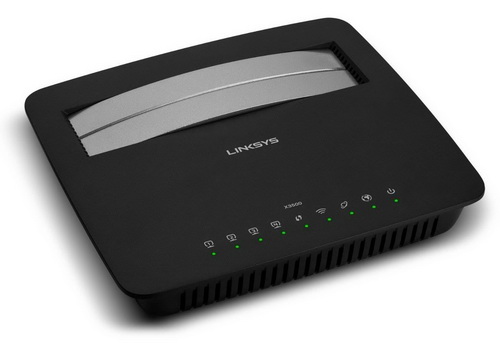INTRODUCTION

The last 6 years or so although I’ve had a good number of routers arrive at my doorstep i can't say the same for ADSL2+ modem/routers since for some reason manufacturers no longer feel that it's necessary to cover that segment of the market. Personally I’ve always liked using modem/routers not only because it really saves space (along with an extra power socket) but also because i believe these work better compared to a standalone router plugged into a modem. Unfortunately as we speak most available modem/routers feature the previous generation 802.11n (750Mbps total) standard which is obviously not nearly as fast as the brand new 802.11ac one (1900Mbps total) so if you happen to want the best possible wireless signal then you could be better off choosing the solution above. For people however who are not ultra-demanding in that area Linksys has released the X3500 dual band wireless-n modem/router which we have been using for a couple of weeks now.
The Linksys brand has pioneered wireless connectivity since its inception in 1988 with its leading innovation and engineering strategies, and best-in-class technology, design, and customer service. Linksys enables a connected lifestyle for people at home, at work and on the move, and with its award-winning products, simplifies home control, entertainment, security and Internet access through innovative features and a growing application and partner ecosystem.
Much like most modem/router and router models in the market currently the X3500 by Linksys is a N750 dual-band device that transmits two concurrent signals one of which has a bandwidth of 300Mbps on the 2.4GHz band while the other goes up to 450Mbps on the 5GHz band. Of course as we've mentioned in previous reviews the total of both signals is not really usable meaning you can't connect a single device to the X3500 at 750Mbps (in this case). Still being able to use both signals separately with different devices (thus achieving higher speeds in total) can certainly be very useful to some people so we can't really complain. The X3500 also features native IPv6 support, Gigabit WAN port (in case you'd like to connect it with another modem), 4 Gigabit Ethernet ports and a USB port used to share storage media like USB flash drives and printers to the local network (can also configure storage media for FTP use). What interests us more of course is the performance of the X3500 so let’s see what Linksys has to offer with the X3500.

 O-Sense
O-Sense









